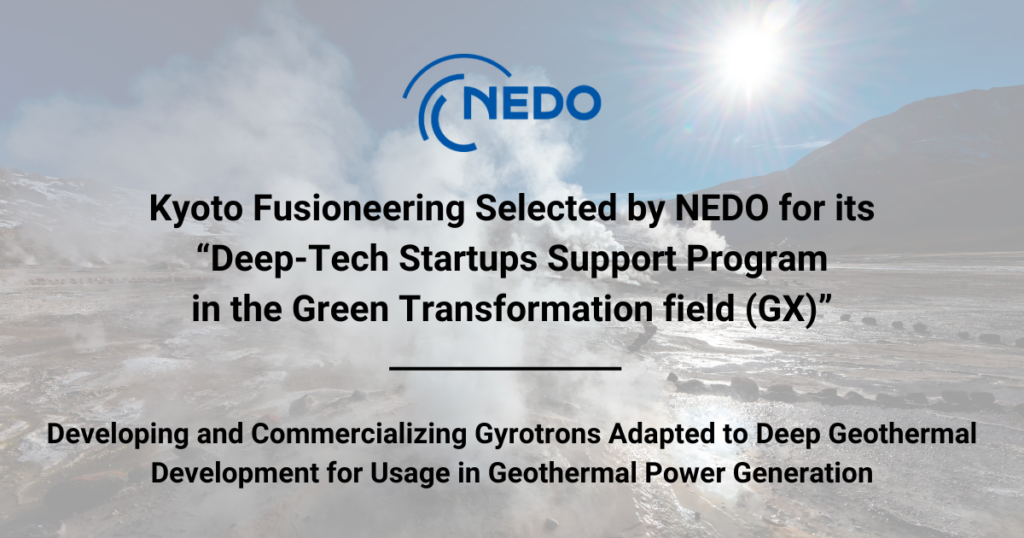Developing and Commercializing Gyrotrons Adapted to Deep Geothermal Development for Usage in Geothermal Power Generation
Kyoto Fusioneering (KF) has been selected by the New Energy and Industrial Technology Development Organization (NEDO), headquartered in Kawasaki, Japan, for the Seed-based Technology-based Startups (or STS) phase of the first public call for its new program, the “Deep-Tech Startups Support Program in the Green Transformation field (GX)”.

Geothermal power generation holds high potential as a renewable energy source and thus is expected to contribute to making GX a reality, yet several challenges remain in terms of its widespread use. Drilling methods are one such issue: drilling to the depths needed to efficiently extract geothermal energy takes time and leads to the inevitable wear and tear and the subsequent replacement of drilling equipment. This, along with long operating times and the high temperature and pressure environment underground, results in high final energy generation costs. To mitigate this, scientists have researched and developed an advanced method of drilling by fracturing (melting and evaporating) rock with microwaves (millimetre waves) emitted by high-powered millimetre-wave generators called gyrotrons. In conventional geothermal drilling, the temperature and hardness of the rock increases with its depth, which increases the stress on the drilling equipment, but with gyrotrons the equipment itself is not directly impacted by the rock since drilling involves using microwaves emitted from the equipment.
The core technology for gyrotrons was first developed by national research institutes, including the National Institutes for Quantum Science and Technology (QST) in nuclear fusion research. KF is working on the development of a new gyrotron technology based on these technologies. In this project, KF will use its technical acumen and expertise to develop and commercialise a high output, continuous operation gyrotron, which can be adapted to a deep geothermal development, and a power supply for continuous operation. Gyrotrons will likely be used in other industries, including the development of nuclear fusion and space exploration. These devices, based on decades of research and development and rooted in Japanese technology, are expected to be in greater demand in the global market in the coming years and decades.
For more information, see the announcement on NEDO’s website (in Japanese).




